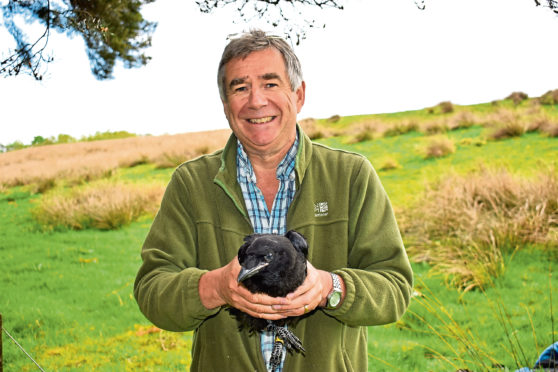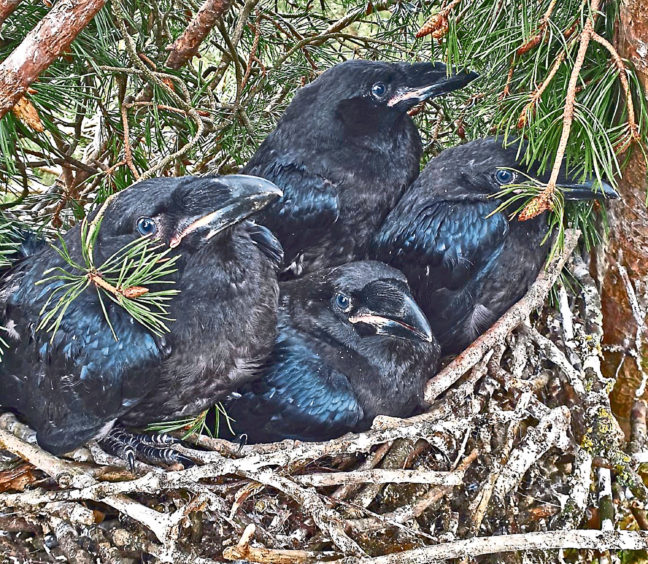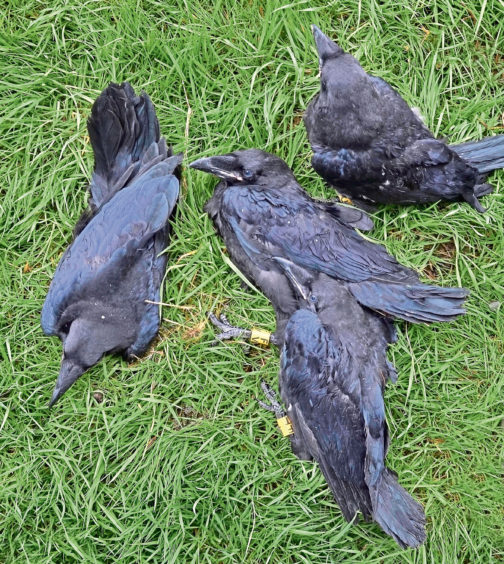Ravens are intelligent and enshrined in our folklore from the earliest of times and until recently relatively scarce birds in Scotland. The population is now recovering in many parts of the country.
It takes guts and determination to scale a swaying 80ft pine tree to collect four raven chicks, lower them to the ground for leg rings to be put on, and then return safely back to their nest.
But that’s exactly what James Leonard of the Central Scotland Raptor Study Group achieved recently in Clackmannanshire, as part of a team engaged in research on ravens and their behaviour, and I was delighted to help in this ringing work.
As I held one of the youngsters in my hands, waiting for its rings to be put on, the charisma of the bird just shone out at me; a bundle of wriggling character, bright-eyed and always keen to give a mischievous peck.
They were being ringed because recoveries or sightings of such birds can reveal a fascinating insight into their behaviour and movements.
Such work is more pertinent than ever, given that an ‘experimental cull’ of ravens in an area of Perthshire, the license for which is currently suspended following a widespread outcry, might still go-ahead in a revised form in a move to supposedly safeguard dwindling wader populations. However, the whole issue goes deeper than this, with Scottish Natural Heritage regularly issuing licences for farmers to cull ravens if they are causing damage to livestock, particularly lambs.
It is a tricky one; our hardworking farmers require to make a living and as a society we need to have food on our plates. But equally, we have a responsibility to look after our environment and its wildlife – and that includes ravens.
We know so little about ravens, and as such, it seems to me that culling should only ever be an option of last resort, once all other avenues have been explored. Do ravens take wader chicks? Of course, they do, but then so do many other predators. It is called nature and ravens are an integral part of that. The issue of wader decline needs to be taken in the broader context of habitat loss and what can be done to manage these areas better.
The same with lambs. Yes, I’m sure lambs are occasionally predated upon, but is much of the damage more perceived than real, with many of those taken being poorly or stillborn? Culling is often a knee-jerk reaction with little thought towards intelligent management. Remove a breeding pair of ravens from their defended territory, then more birds may just simply move in to fill the gap.
And what about the wishes of the consumer, you and I, the people who buy the farm produce? Would you want to purchase from a farm that was culling ravens? Possibly not.
Farming is our lifeblood, but so is our nature, and as a pragmatic conservationist, I believe all sides in the debate must engage in constructive dialogue, to listen and to compromise. But I suspect I’m more likely to see a pig flying over my Clackmannanshire raven’s nest before that will ever happen.











